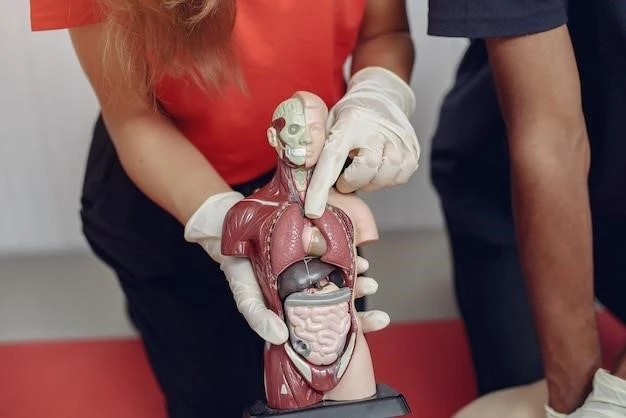Introduction
Partial agenesis of the corpus callosum (P-ACC) is a rare birth defect where there is a partial absence of the corpus callosum, the white matter structure connecting the brain’s hemispheres․ This condition arises from disrupted development in the embryo, impacting the communication between brain regions․
Definition and Overview of Partial Agenesis of Corpus Callosum
Partial Agenesis of the Corpus Callosum (P-ACC) is a condition characterized by the incomplete development or absence of a part of the corpus callosum, the brain structure responsible for connecting the two hemispheres․ This anomaly disrupts the typical communication between brain regions․ P-ACC usually affects the posterior portion of the corpus callosum, leading to challenges in transferring motor, sensory, and cognitive information between the hemispheres․

Causes and Risk Factors
Partial agenesis of the corpus callosum is attributed to disruptions in the embryo’s development, impacting the formation of the white matter structure responsible for connecting the brain’s hemispheres․ Genetic factors and environmental influences may contribute to the risk of this condition․
Factors Contributing to Partial Agenesis
Partial Agenesis of the Corpus Callosum (P-ACC) is primarily caused by disruptions in the embryo’s development, leading to the incomplete formation of the white matter structure that connects the brain’s hemispheres․ Genetic factors, environmental influences, or intrauterine disturbances during specific pregnancy weeks are key contributors to this condition․ P-ACC may manifest when the corpus callosum’s development is hindered, affecting the transfer of essential information between brain regions․
Genetic Inheritance and Developmental Disruption
The development of Partial Agenesis of the Corpus Callosum (P-ACC) is influenced by genetic factors and disruptions in the embryo’s growth during specific pregnancy weeks․ In some cases, P-ACC can be inherited as an autosomal recessive trait or an X-linked dominant trait․ Additionally, intrauterine infections or injuries during crucial developmental stages may lead to disturbances in the fetal brain, resulting in the formation of P-ACC․

Symptoms and Diagnosis
Partial Agenesis of the Corpus Callosum can lead to various symptoms, including developmental delays, cognitive challenges, and motor coordination difficulties․ Diagnosis often involves imaging techniques like MRI or CT scans to visualize the brain’s structure and identify abnormalities associated with partial agenesis․
Identifying Signs of Partial Agenesis
Signs of Partial Agenesis of the Corpus Callosum may include developmental delays, cognitive challenges, motor coordination difficulties, and sensory processing issues․ The presence of these symptoms might prompt further evaluation and diagnostic imaging to assess the extent of the condition․
Diagnostic Techniques and Imaging
Diagnostic methods used to identify Partial Agenesis of the Corpus Callosum include neuroimaging techniques like magnetic resonance imaging (MRI) or computed tomography (CT) scans․ These imaging technologies allow healthcare professionals to visualize the brain’s structure and detect any abnormalities associated with Partial Agenesis․
Treatment Options
Various management strategies can help individuals with partial agenesis of the corpus callosum cope with symptoms and challenges․ Therapies and interventions tailored to specific needs, such as occupational therapy and speech therapy, can support neurodevelopment and overall well-being in affected individuals․
Management Strategies for Partial Agenesis
Individuals with Partial Agenesis of the Corpus Callosum (P-ACC) may benefit from management strategies aimed at addressing developmental delays, cognitive difficulties, and motor coordination challenges․ Tailored interventions encompassing occupational therapy, speech therapy, and educational support can enhance neurodevelopment and quality of life for those affected by P-ACC․
Therapies and Interventions
Management of Partial Agenesis of the Corpus Callosum (P-ACC) includes various therapeutic interventions tailored to address developmental delays, cognitive impairments, and motor coordination difficulties․ Therapies like physical therapy, speech therapy, and educational support play a crucial role in enhancing the neurodevelopment and overall quality of life in individuals affected by P-ACC․
Prognosis and Complications
Partial Agenesis of the Corpus Callosum can lead to potential long-term effects and associated neurodevelopmental challenges․ Understanding the prognosis and possible complications of this condition is essential in managing the overall well-being of affected individuals․
Potential Outcomes and Long-Term Effects
Partial Agenesis of the Corpus Callosum (P-ACC) can result in various long-term effects and neurodevelopmental challenges for affected individuals․ These outcomes may range from developmental delays and cognitive difficulties to motor coordination issues․ Understanding and addressing these long-term effects are crucial in managing the overall well-being of individuals with P-ACC․
Associated Neurodevelopmental Challenges
Individuals with Partial Agenesis of the Corpus Callosum may face various neurodevelopmental challenges, ranging from cognitive impairments and motor coordination difficulties to sensory processing issues․ Understanding and addressing these challenges play a vital role in the comprehensive management and support of individuals affected by this condition․
